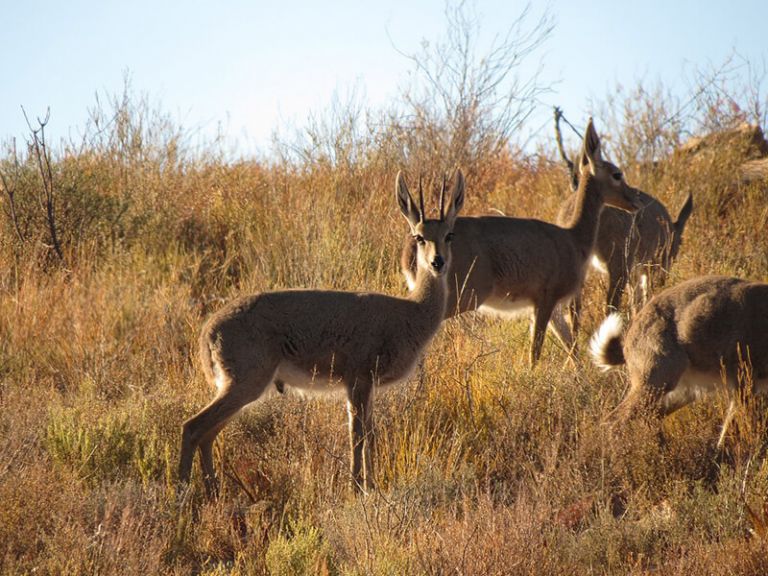We are excited to report that it’s going well with our camera trap survey setup in the field. We have experienced some cold days, rain and even light snow during the time of the big storm in Cape Town. It was incredible to see the white-topped mountains, it felt for a day or two like we were in the Alps. Fortunately, we have good outdoor gear for fieldwork, kindly sponsored by K-way so we are keeping warm in the harsh winter weather conditions.
We have seen very beautiful and remote places over the last few weeks and we feel privileged to be able to experience it. We have seen so many leopard tracks and signs in the places where we have placed our cameras and even explored a few caves, discovering beautiful bushman paintings, as well as old Klipspringer and Dassie (rock hyrax) carcasses dragged into the caves by the leopard.
So far, we have placed out 90% of our camera trap mounting poles in the field and 40% of our cameras have been set up. We are working long hours and straight through now to get it done as quickly as possible and we hope to be finished by the end of this month if all goes to plan. We will leave the camera traps out for a period of two months before servicing them (change batteries and download images). We can’t wait to see the photos and to share them with you.
Just to give you some idea what we do in the field, once we reach the location of the camera trap site we do a thorough search for any tracks and signs of leopard and their key prey species in the area (we search in a radius of +/- 200 meter from the camera trap station and record any signs on our data sheet). We then proceed with setting up the cameras. We have two cameras at each camera trap station, one on each side of the trail to ensure that we get both sides of the leopard photographed for identification purposes (The rosette pattern on each leopard is unique and can be used to identify individuals, that’s how we know how many leopards there are). The camera trap setup entails the mounting of the cameras onto the poles, cutting the vegetation in the direct field of view of the cameras to avoid false triggers caused by moving vegetation or blocking the field of view of the camera. Subsequently, we check if the angle and height of the camera are correct. We do this by leopard crawling in front of the camera. The images are then downloaded from the camera trap onto a tablet to view them and if necessary we adjust the angle of the camera. Once we are happy with the angle and height of the cameras we switch them on and proceed to the following site.

















